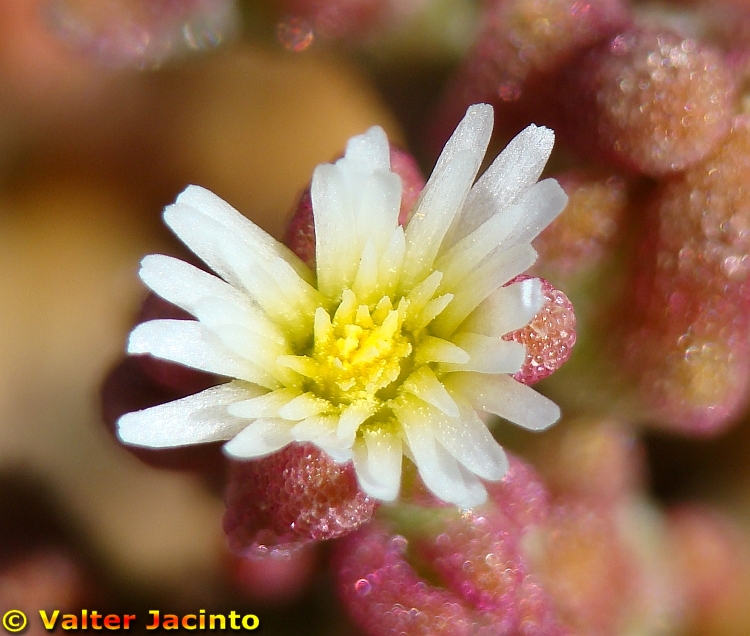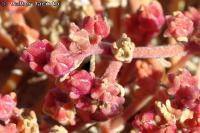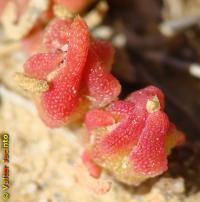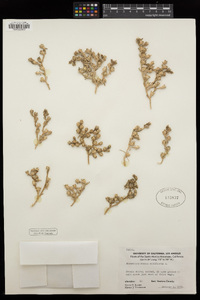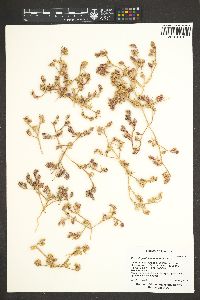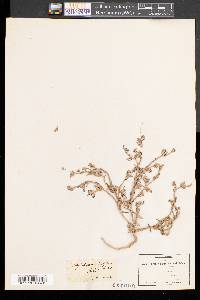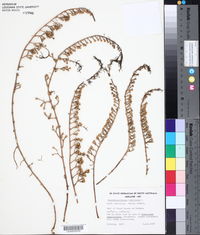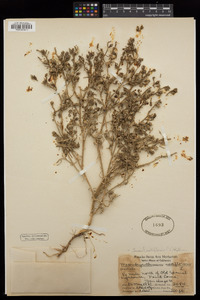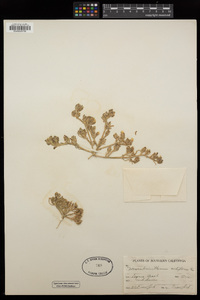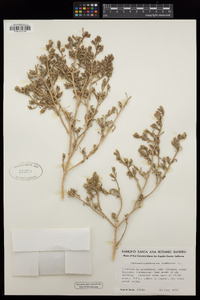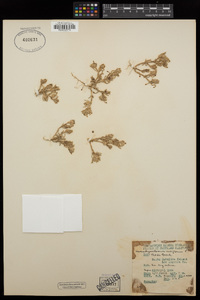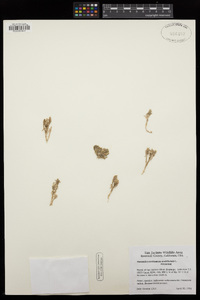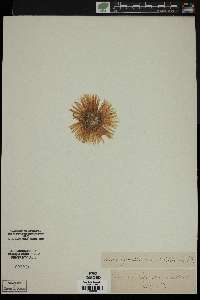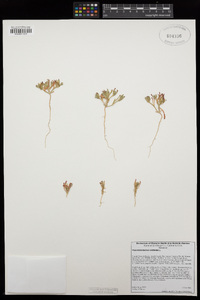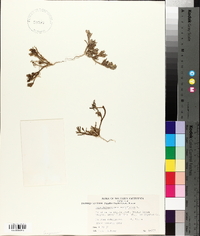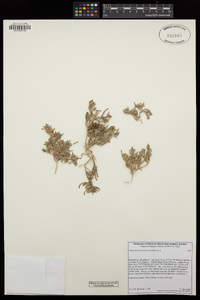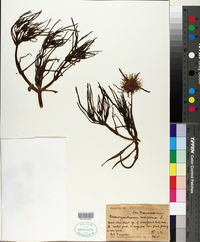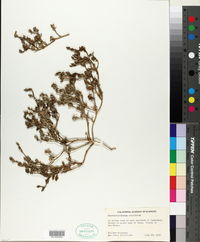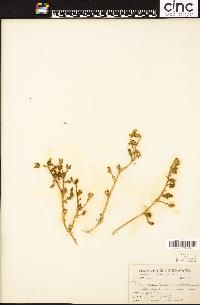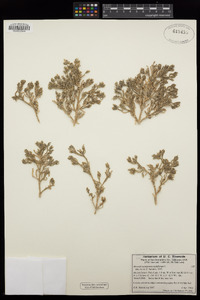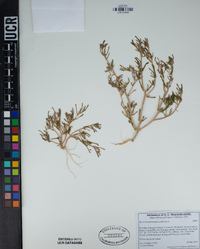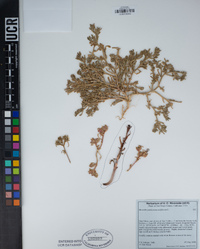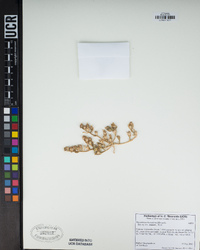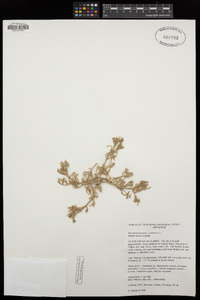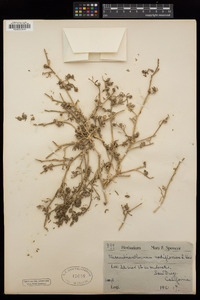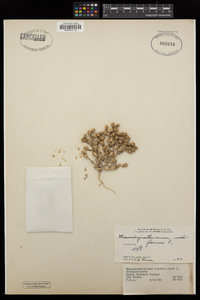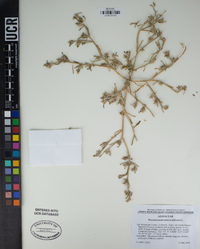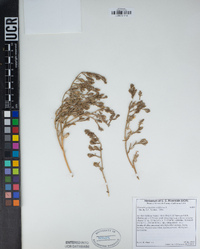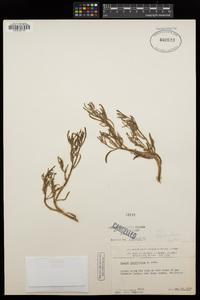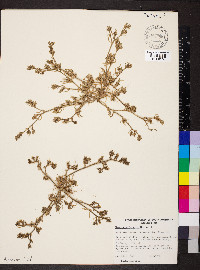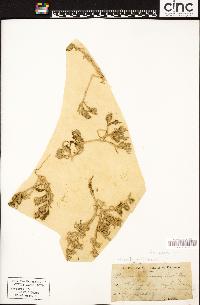Mesembryanthemum nodiflorum
|
|
|
|
Family: Aizoaceae
Slender-Leaf Iceplant, more...slenderleaf iceplant (es: hielitos)
[Cryophytum nodiflorum (L.) L. Bolus, moreGasoul nodiflorum (L.) Rothm.] |
Plants annual. Stems prostrate to ascending, branched from base, 15-20 cm, sessile. Leaves: blade ± terete, linear, 1-2 cm. Inflorescences axillary, flowers solitary, sessile or petiolate; bracts absent. Flowers 4-5 mm diam.; hypanthium obconic; calyx lobes 5, equal; petals 20, connate, white, aging yellow; stamens 10. Capsules finely papillate. Seeds 100, smooth to minutely tuberculate. 2n = 36. Flowering spring-fall. Coastal bluffs, margins of saline wetlands; 0-100 m; introduced; Calif., N.J.; Mexico (Baja California); Europe (Mediterranean); Asia; Atlantic Islands; Australia. General: Introduced herbaceous annuals, stems sessile, 15-20 cm long, prostrate to ascending, branching from base, surfaces usually conspicuously papillate, glabrous. Leaves: Opposite or alternate, blades more or less terete, linear, 1-2 cm long, sessile or petiolate. Bracts absent. Flowers: White, aging yellow, 4-5 mm diameter, petals 20, connate into tubes, calyx lobes 5, equal, hypanthium obconic, aging red, stamens 10; flowers solitary, axillary, sessile or petiolate. Fruits: Capsules finely papillate. Seeds to 100, smooth to minutely tuberculate. Ecology: Found on coastal bluffs, margins of saline wetlands, from 0-350 ft (0-106 m); flowering spring-fall. Distribution: Introduced. Arizona, Oregon, California, New Jersey; Mexico. Notes: Look to the white to yellow flowers 4-5 mm in diameter and terete leaf blades to help distinguish this species from the similar M. crystallinum, which has flattened leaf blades and larger, white to pink flowers, these 7-10 mm in diameter. Ethnobotany: Unknown. Etymology: Mesembryanthemum is either; (1) derived from 2 words: mesos, “middle,” and embryon, “fruit,” indicating a flower with its fruit in the middle, and/or (2) afternoon-blooming. The original name was Mesembrianthemum, from mesembria or “mid-day” alluding to the belief that the species only bloomed in the sunlight. After night-blooming species were discovered, the spelling of the name was changed to its current form, while nodiflorum means with flowers borne from the nodes. Sources: FNA 2004 FNA 2004 Duration: Annual Nativity: Non-Native Lifeform: Forb/Herb General: Introduced herbaceous annuals, stems sessile, 15-20 cm long, prostrate to ascending, branching from base, surfaces usually conspicuously papillate, glabrous. Leaves: Opposite or alternate, blades more or less terete, linear, 1-2 cm long, sessile or petiolate. Bracts absent. Flowers: White, aging yellow, 4-5 mm diameter, petals 20, connate into tubes, calyx lobes 5, equal, hypanthium obconic, aging red, stamens 10; flowers solitary, axillary, sessile or petiolate. Fruits: Capsules finely papillate. Seeds to 100, smooth to minutely tuberculate. Ecology: Found on coastal bluffs, margins of saline wetlands, from 0-350 ft (0-106 m); flowering spring-fall. Distribution: Introduced. Arizona, Oregon, California, New Jersey; Mexico. Notes: Look to the white to yellow flowers 4-5 mm in diameter and terete leaf blades to help distinguish this species from the similar M. crystallinum, which has flattened leaf blades and larger, white to pink flowers, these 7-10 mm in diameter. Ethnobotany: Unknown. Synonyms: Cryophytum nodoflorum, Gasoul nodiflorum Editor: LCrumbacher2012 Etymology: Mesembryanthemum is either; (1) derived from 2 words: mesos, "middle," and embryon, "fruit," indicating a flower with its fruit in the middle, and/or (2) afternoon-blooming. The original name was Mesembrianthemum, from mesembria or "mid-day" alluding to the belief that the species only bloomed in the sunlight. After night-blooming species were discovered, the spelling of the name was changed to its current form, while nodiflorum means with flowers borne from the nodes. |

